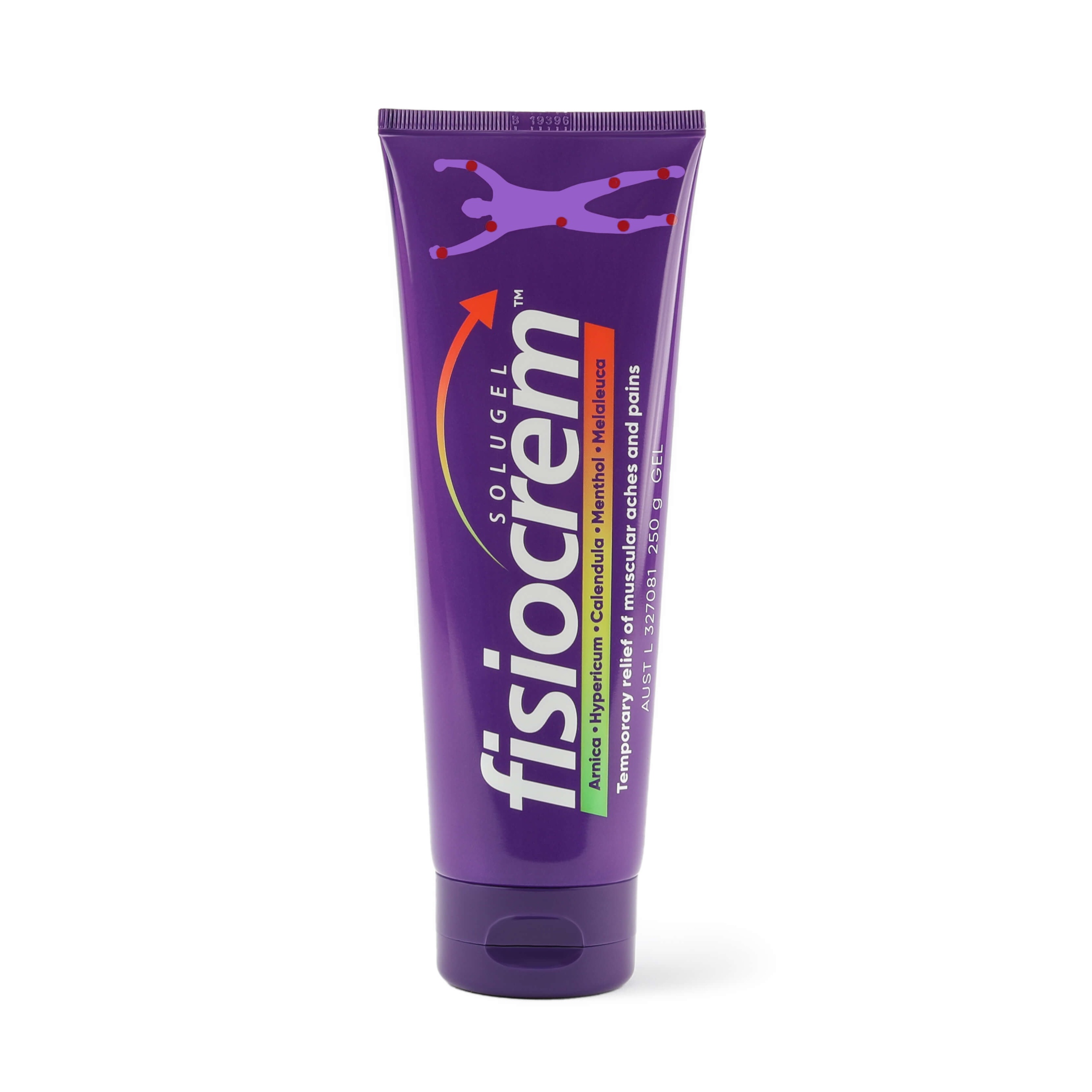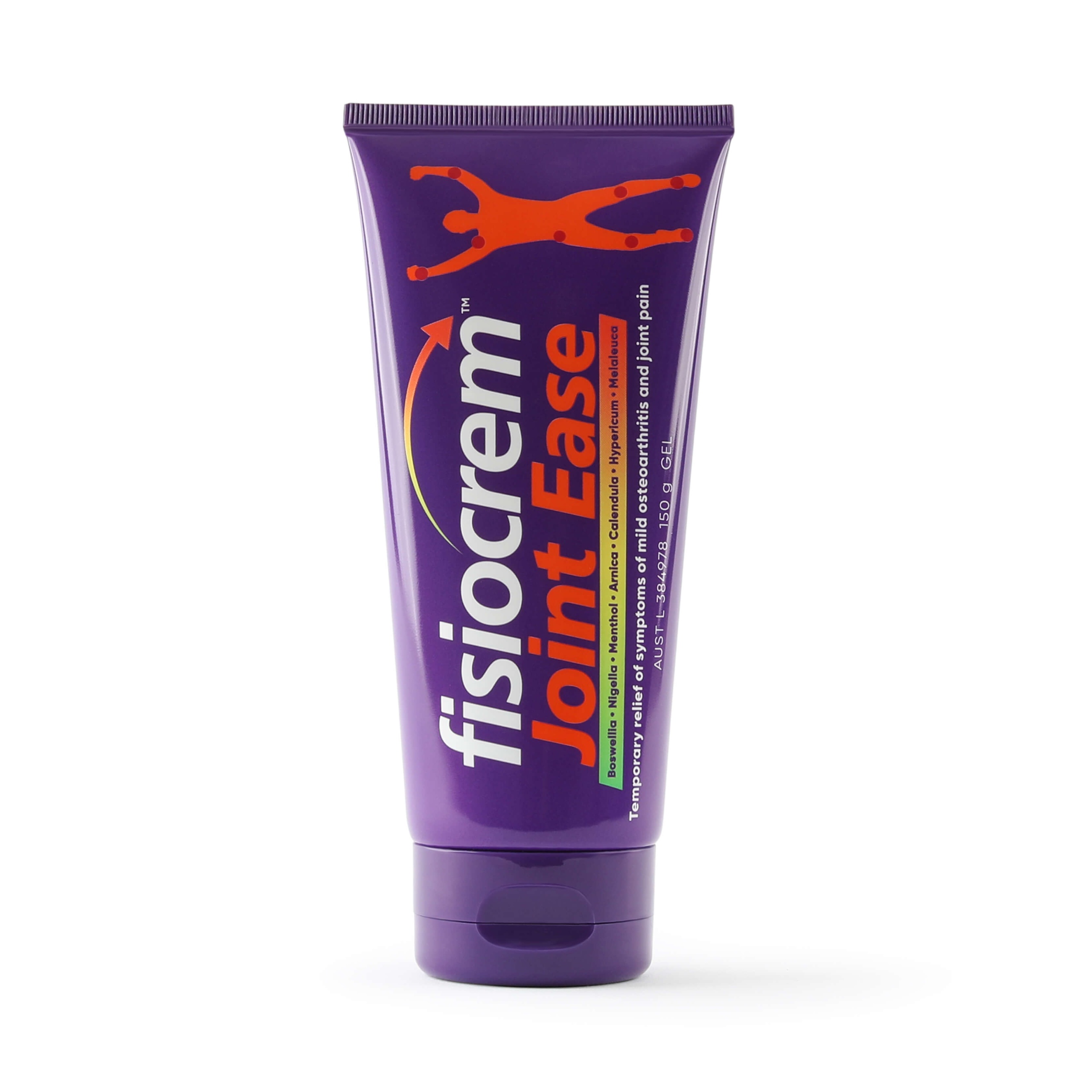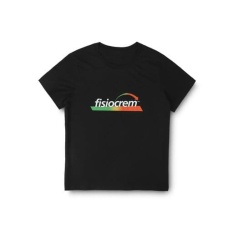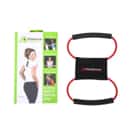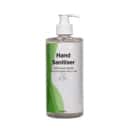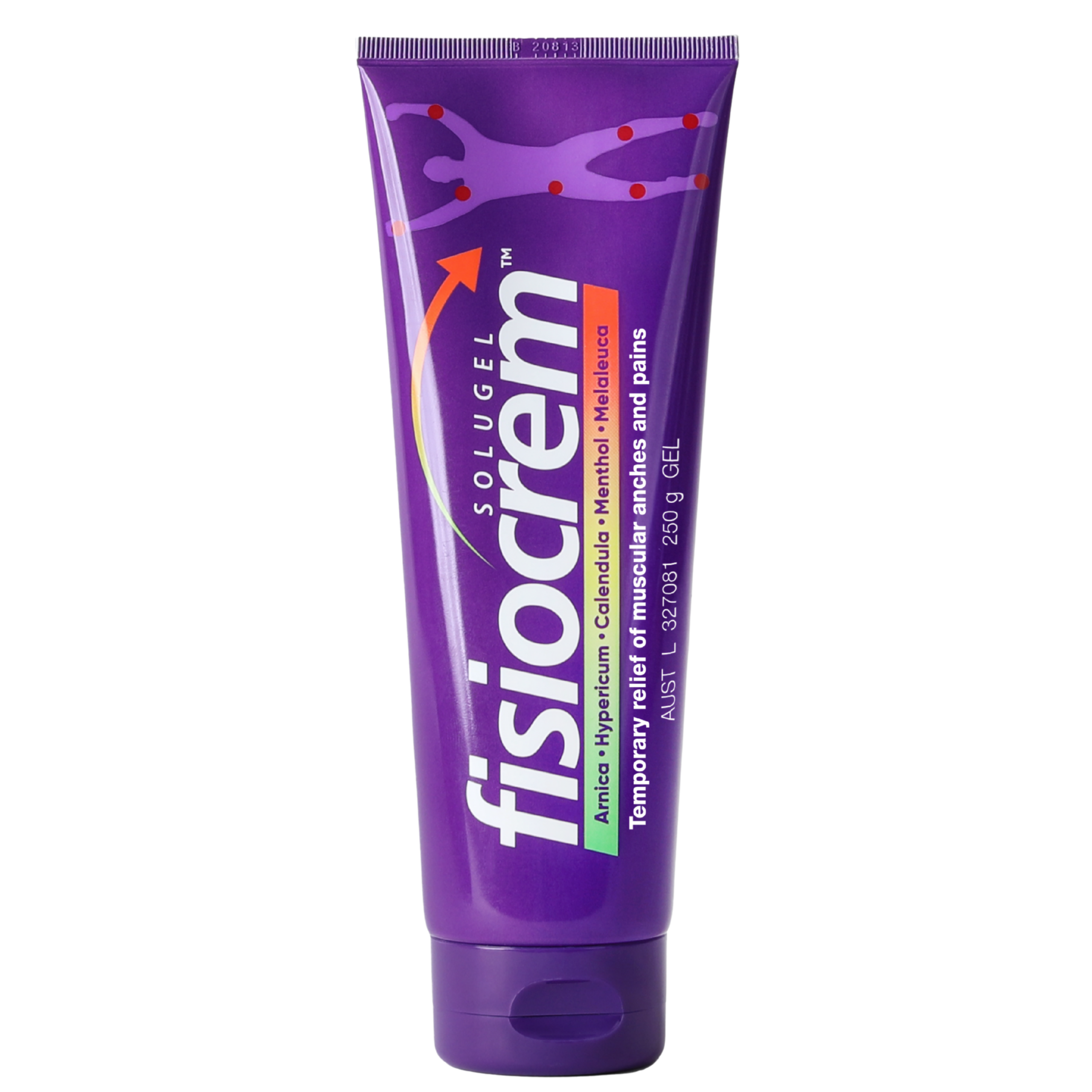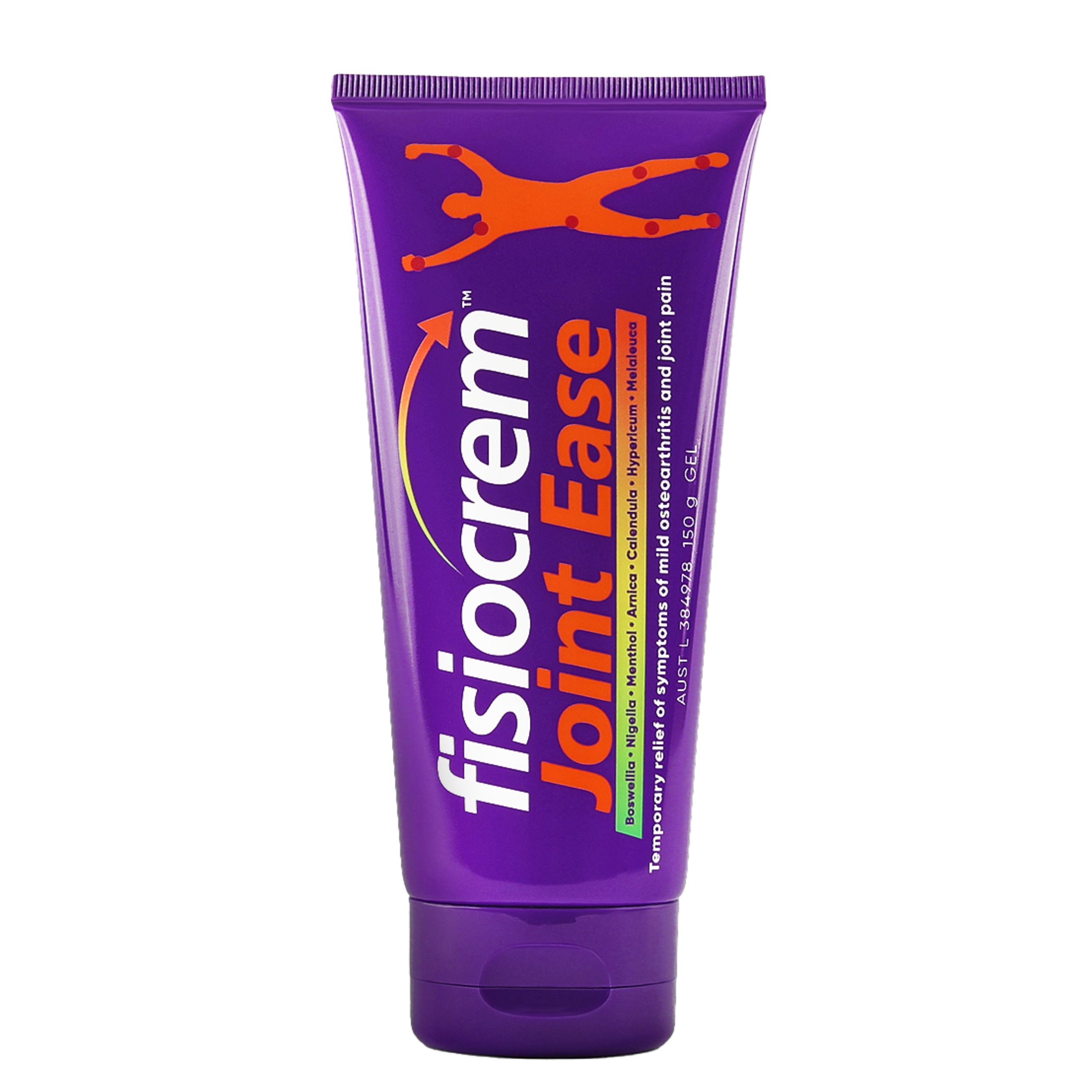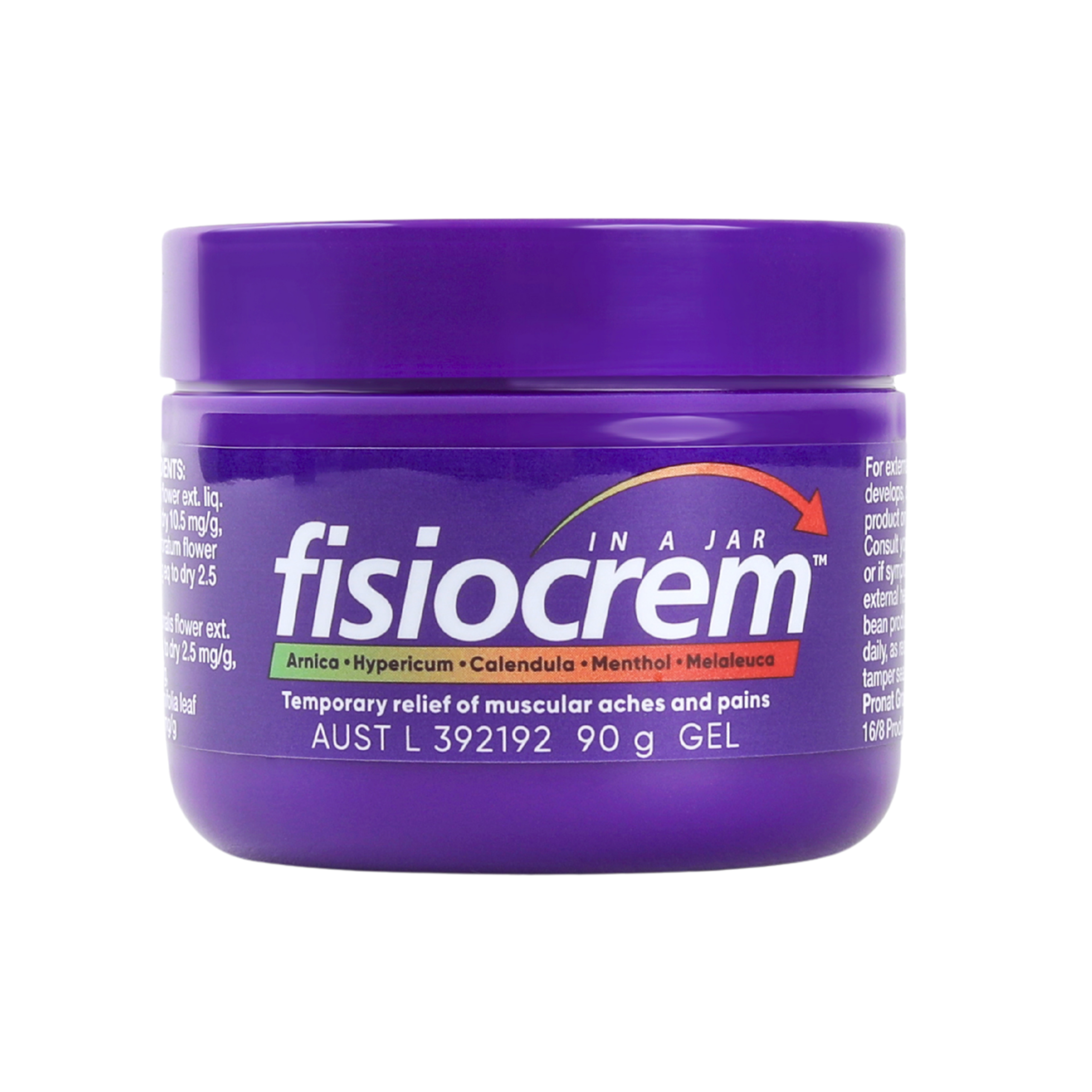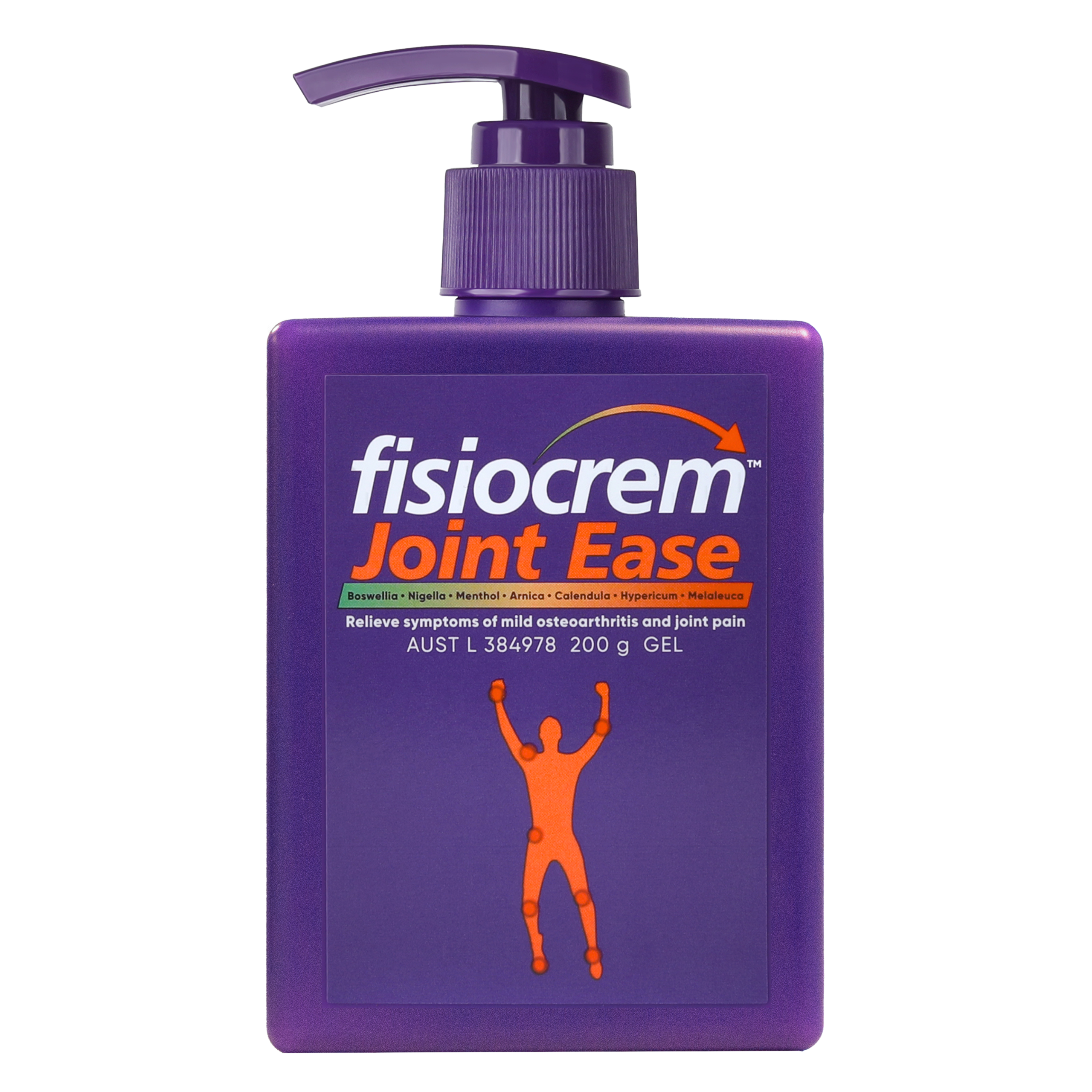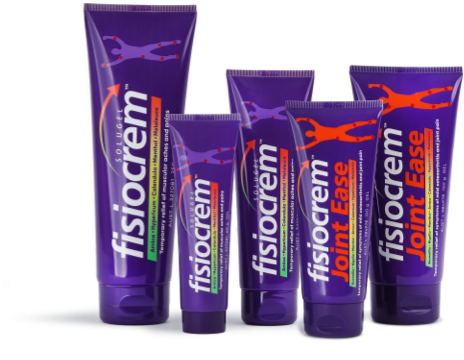An anti-inflammatory diet can help reduce stress, and depression and help relieve muscle and joint pain. Moreover, a decreased consumption of pro-inflammatory foods can help improve sleep quality, therefore improving one’s quality of life (Sala-Climent et al., 2023).
What Is Inflammation and Why Does It Matter?
Inflammation is the body’s primary response to injury, infection or irritation (Rankin, 2004)(Rondanelli et al., 2018). Inflammation is caused by the migration of immune cells from the blood vessels to the damaged site to repair damaged tissue (Rondanelli et al., 2018)(Schmid-Schönbein, 2006).
Acute Inflammation
Acute inflammation is the body’s immediate short-term response to injury or infection. Symptoms of acute inflammation can include, redness, swelling, tenderness, pain and reduced function. Please note that if the acute inflammatory phase does not eliminate the pathogen, and resolve the inflammation, the inflammatory process continues to develop into chronic inflammation. If inflammation is prolonged and ongoing it is important to see a healthcare professional as it may be a sign of a more serious condition or disorder (Rondanelli et al., 2018).
How Your Diet Can Influence Muscle & Joint Pain
Diet and nutrition are modifiable lifestyle factors that can impact inflammation and pain (Galland, 2010)(Philpot & Johnson, 2019). A diet with fruit, vegetables, olive oil, nuts, grains and legumes (e.g. Mediterranean diet), with adequate nutrients such as omega-3, and magnesium coupled with a reduction in processed foods can help to reduce inflammation (Galland, 2010)(Philpot & Johnson, 2019). These anti-inflammatory foods can moderate pain and improve functional loss associated with musculoskeletal conditions such as mild osteoarthritis, low back pain and decreased functional abilities (Towery et al., 2018). A low-inflammatory diet can be useful for not only reducing inflammation but also assisting with weight loss. A reduction in excess weight load placed on the joints and muscles improves physical function and reduces joint and muscle pain (Genel et al., 2020).
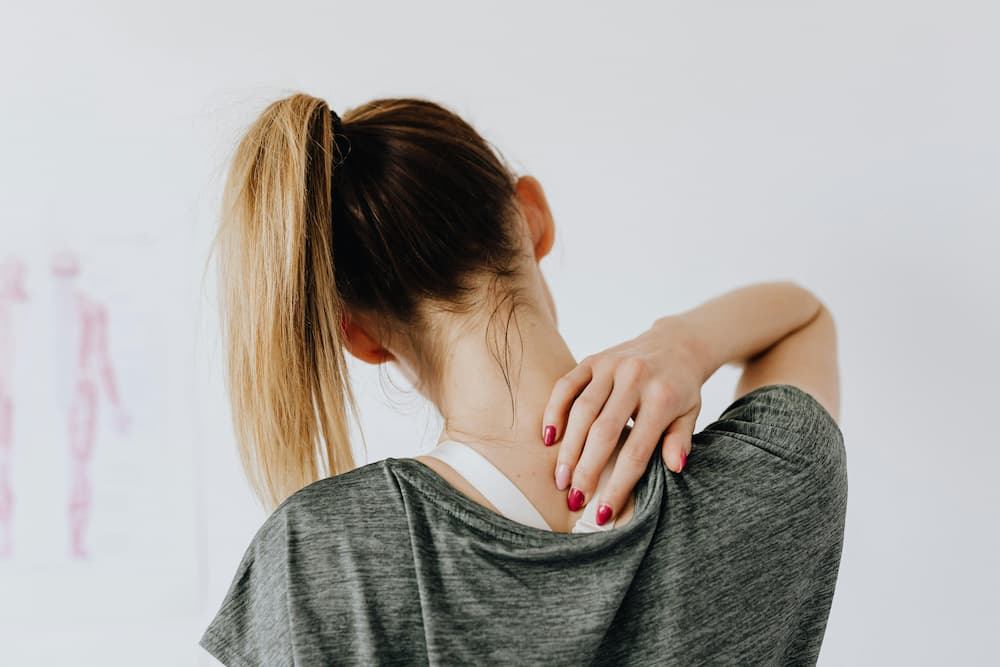
Eat for Relief: Foods That Help (and Hurt)
Below is a list of foods that can help moderate and reduce inflammation include:
- Fruits (Wu & Schauss, 2012). Citrus fruits such as oranges, lemons, and grapefruits are high in vitamin C and possess anti-inflammatory and antioxidant properties (Majdan et al., 2022).
- Berries including blueberries, strawberries, raspberries, and blackberries help to reduce stress and inflammation (Wu & Schauss, 2012)(Majdan et al., 2022).
- Vegetables that help with inflammation include: tomatoes, olives, garlic, broccoli, and leafy greens like spinach and kale (Wu & Schauss, 2012)(Lapuente et al., 2019).
- Nuts including almonds, walnuts, pistachios, cashews and hazelnuts (Wu & Schauss, 2012)(Salas-Salvadó et al., 2008).
- Wholegrains such as oats, barley, brown rice and quinoa (Wu & Schauss, 2012)(Lefevreet al., 2012).
- Fish are rich in omega-3 fatty acids. Types of fish that help reduce inflammation include Salmon, Mackerel, and Sardines (Ellulu et al., 2015).


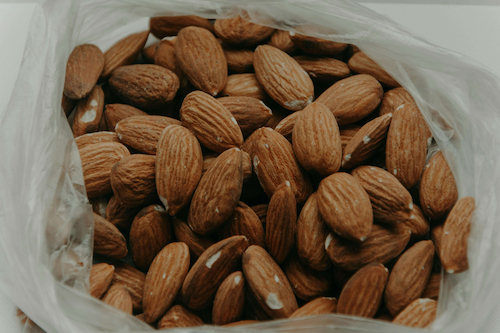
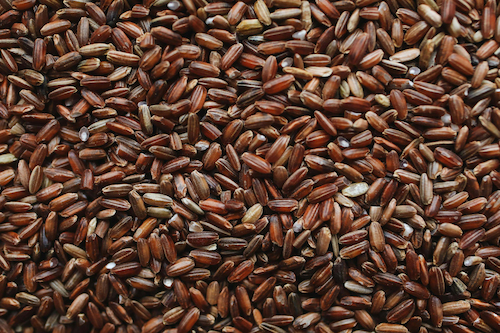
Foods to limit or avoid include:
- Red meat and processed meats like bacon, sausages and deli meats (Yu et al. 2024).
- Refined carbohydrates such as white bread, pastries and other processed grains (Yu et al. 2024).
- Alcohol (Yu et al. 2024).
- Added sugars: Sugary beverages like Coke, and desserts (Yu et al. 2024).
- Saturated fats & trans fats: Fried foods and processed snacks (Yu et al. 2024).
While diet plays a key role in managing inflammation, combining it with targeted support can enhance relief. For example, a joint pain cream can help ease inflammation and support joint pain relief, while a muscle pain relief cream may be beneficial for muscle aches, sprains, and strains.
Cooking Methods Make a Difference.
The anti-inflammatory properties of foods can be modified, increased or decreased as a result of particular cooking methods such as boiling, steaming or frying (Gunathilake, et al. 2018). The cooking methods of, raw, boiling, pan-frying, and toasting that have no added fats, and no added oil are associated with positive differences in several inflammatory markers (Rodríguez-Ayala et al., 2022)(Moreno-Franco et al. 2021). These include kidney function, vitamin D, thyroid hormones, and the preservation of key food nutrients (Rodríguez-Ayala et al., 2022)(Moreno-Franco et al. 2021). Cooking methods such as deep frying and stewing showed detrimental inflammatory profiles including lower levels of vitamin D (Rodríguez-Ayala et al., 2022). Herbs and spices beyond their seasoning properties, can also have a systematic impact on inflammation (Charneca et al, 2023). Herbs and spices such as cinnamon, garlic, coriander, ginger, turmeric, and saffron are popular spices to help reduce inflammation (Baliga et al., 2015). Curcumin is an active component found within turmeric. Curcumin has demonstrated potential as a treatment agent for mild osteoarthritis, a disease with an underlying inflammatory cause (Chin, 2016). It is effective in helping to reduce pain, and improve physical function, thus improving mild osteoarthritis suffers quality of life (Chin, 2016).
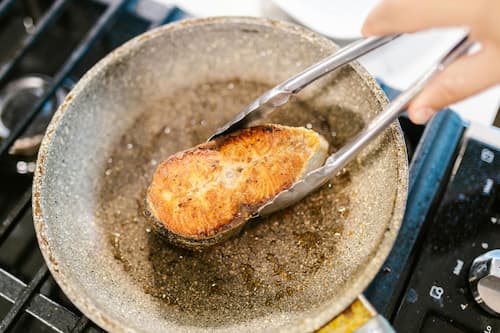
References
1) Baliga, M., Mane, P., Nallemgera, J., Thilakchand, K., Kalekhan, F. (2015). Foods and Dietary supplements in the prevention and treatment of disease in older adults, (41-49).
2) Charneca, S., Hernando, A., Costa-Reis, P., & Guerreiro, C. S. (2023). Beyond Seasoning-The Role of Herbs and Spices in Rheumatic Diseases.
3) Chin, K. (2016). Drug Design, Development and therapy, (10) 3029-3042.Chin, K.-Y. (2016). Doi:10.2147/dddt.s117432
4) Ellulu, M. S., Khaza’ai, H., Abed, Y., Rahmat, A., Ismail, P., & Ranneh, Y. (2015). Role of fish oil in human health and possible mechanism to reduce the inflammation. Inflammopharmacology, 23(2–3), 79–89.
5) Gunathilake, K. D. P. P., Ranaweera, K. K. D. S., & Rupasinghe, H. P. V. (2018). Influence of Boiling, Steaming and Frying of Selected Leafy Vegetables on the In Vitro Anti-inflammation Associated Biological Activities.
6) Rodríguez-Ayala, M., Banegas, J. R., Ortolá, R., Gorostidi, M., Donat-Vargas, C., Rodríguez-Artalejo, F., & Guallar-Castillón, P. (2022). Cooking methods are associated with inflammatory factors, renal function, and other hormones and nutritional biomarkers in older adults.
7) Moreno-Franco, B., Rodríguez-Ayala, M., Donat-Vargas, C., Sandoval-Insausti, H., Rey-García, J., Lopez-Garcia, E., Benegas, J., Rodríguez-Artalejo, F., Guallar-Castillón, P. (2021). Association of Cooking Patterns with Inflammatory and Cardio-Metabolic Risk Biomarkers.
8) Galland, L. (2010). Diet and Inflammation. Nutrition in Clinical Practice, 25(6), 634–640.
9) Genel, F., Kale, M., Pavlovic, N., Flood, V. M., Naylor, J. M., & Adie, S. (2020). Journal of Nutritional Science.
10) Lapuente, M., Estruch, R., Shahbaz, M., & Casas, R. (2019). Relation of Fruits and Vegetables with Major Cardiometabolic Risk Factors, Markers of Oxidation, and Inflammation. Nutrients, 11 (10), 2381.
11) Lefevre, M., Jonnalagadda, S. (2012). Effect of whole grains on markers of subclinical inflammation. Nutrition Reviews, 70 (7), 387–396.
12) Majdan, M., & Bobrowska-Korczak, B. (2022). Active Compounds in Fruits and Inflammation in the Body. Nutrients, 14 (12), 2496.
13) Philpot, U., & Johnson, M. I. (2019). Diet Therapy in the Management of Chronic Pain: Better Diet Less Pain?. Pain Management, 9(4), 335–338.
14) Rankin, J. (2004). Biological Mediators of Acute Inflammation. AACN Advanced Critical Care, 15 (1), 3-17.
15) Rondanelli, M., Faliva, M. A., Miccono, A., Naso, M., Nichetti, M., Riva, A., Fabio, G., De Gregori, M., Peroni, G., Perna, S. (2018). Food pyramid for subjects with chronic pain: foods and dietary constituents as anti-inflammatory and antioxidant agents. Nutrition Research Reviews, 31 (1).
16) Sala-Climent, M., López de Coca, T., Guerrero, M., Muñoz, F., López-Ruíz, M., Moreno, L., Alacreu, M., Dea-Ayuela, M. (2023). The effect of an anti-inflammatory diet on chronic pain: a pilot study.
17) Salas-Salvadó, J., , Casas-Agustench, P., Murphy, M., López-Uriarte, P., Bulló, M. (2008). The effect of nuts on inflammation.
18) Schmid-Schönbein, G. W. (2006). Annual Review of Biomedical Engineering, 8(1), 93–151.
19) Towery, P., Guffey, S., Doerflein, C., Stroup, K., Saucedo, S., Taylor, J. (2018). Chronic musculoskeletal pain and function improve with a plant-based diet. Complementary Therapies in Medicine, 40, 64-69.
20) Wu, X., & Schauss, A. G. (2012). Mitigation of Inflammation with Foods. Journal of Agricultural and Food Chemistry, 60(27), 6703–6717.
21) Yu X, Pu H, Voss M. (2024). Overview of anti-inflammatory diets and their promising effects on non-communicable diseases. British Journal of Nutrition. 2024;132(7):898-918.
When it comes to injuries, understanding the distinction between a sprain vs strain is crucial for proper treatment and recovery. Sprains and strains are terms often used interchangeably, but they refer to different conditions that require specific care. Knowing what sets them apart can help prevent further damage and ensure a smoother recovery process.
What is a Sprain?
Ankle sprains are among the most frequent types of musculoskeletal injuries (Rogier et al. 2008). Sprains occur when the ligaments – tissues that connect bones and stabilize joints – are overstretched or torn (Fong, et al. 2009)(Canares & Lockhart, 2013). Sprains commonly occur in areas such as the ankle, wrist, or knee.
For example, an ankle sprain can occur when the foot twists awkwardly, overstretching the ligaments around the joint. These injuries can range from mild (a slight overstretching) to severe (a complete tear).
What is the Difference Between a Sprain vs Strain?
While both involve overstretching, a strain affects muscles or tendons—the tissues that attach muscles to bones. Strains often happen in the lower back and hamstring. Strains usually occur because of overuse or sudden force.
Muscle strains are common injuries and usually occur during strenuous activity. Muscle strain symptoms include acute pain and swelling. Physical therapy can also be implemented into your recovery routine to restore flexibility and strength. Avoiding excessive fatigue and performing adequate warm-ups before exercise can help prevent muscle strain injury (Noonan & Garrett, 1999).
Think of a muscle pull during a workout or a strained gluteal muscle from lifting something heavy. Understanding the difference between a muscle strain vs. a sprain is essential for providing proper first aid.
First Aid for Sprains vs Strains
Immediate first aid can make a significant difference in recovery from a sprain or strain (Borra et al, n.d). The R.I.C.E. method (Rest, Ice, Compression, Elevation) is widely recommended:
- Rest: Avoid using the injured area for a few days to prevent further damage.
- Ice: Apply a cold pack to the area for 20 minutes every 1-2 hours during the first 48 hours. This helps reduce swelling and provides pain relief.
- Compression: Use a bandage to help reduce swelling, but make sure it’s not too tight.
- Elevation: Raise the injured limb above heart level. This helps blood drain from the injury and reduces swelling (Iafstore, 2016).
fisiocrem Solugel - Topical Anti-inflammatory
Additionally, using a topical pain relief gel like fisiocrem Solugel can support the recovery process. fisiocrem Solugel is a topical anti-inflammatory cream that helps relieve symptoms of muscle sprains and strains. fisiocrem Solugel contains naturally derived active ingredients & menthol.
Using fisiocrem Solugel in your recovery routine can help speed up your recovery. It is also useful for treating acute injuries. This can help you get back to your activities more quickly.
fisiocrem Solugel is also ideal for:
- Relieving symptoms of soft tissue trauma
- Assisting in the healing of minor body tissue injuries
- Supports body tissue repair and regeneration
- Relieve symptoms of soft tissue trauma
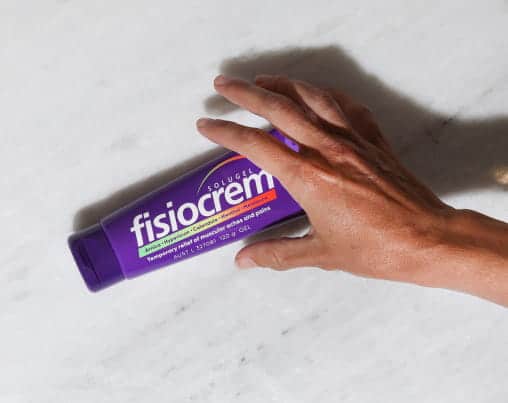
Swelling in Sprains and Strains
Swelling is a common symptom for both sprains and strains, as it indicates tissue damage and inflammation. For sprained ankle treatments, using cold packs can help control swelling in the first 48 hours. Combining this with fisiocrem Solugel can further support pain relief and reduce inflammation, making the recovery process smoother.
Moving Forward with Care
Knowing how to distinguish between a sprain and strain, and how to treat them, can be a game-changer in your recovery. Whether you’re dealing with a sprained ankle or a hamstring sprain, applying the right first aid measures, using fisiocrem Solugel, and gradually reintroducing movement can help you get back on track safely. If symptoms persist or worsen, it’s always best to consult with a healthcare professional for further guidance.
FAQs: Common Questions About Sprains and Strains
Cold is the preferred choice in the first 48 hours following a sprain to reduce swelling. You can introduce heat later to soothe and relax tight muscles.
Cold packs reduce blood flow to the injured area, which helps decrease swelling and numbs the area to reduce pain. This makes them an effective initial treatment for a sprained wrist or ankle.
Yes, heat should be avoided initially, as it can increase swelling. After 48 hours, heat can be beneficial in loosening up tight muscles during recovery.
In conjunction with the R.I.C.E. method. fisiocrem Solugel can help soothe sore muscles and reduce swelling, making it a helpful addition to your recovery plan. Over-the-counter pain relievers can also help manage pain.
Resting the muscle is crucial, followed by gradually re-introducing exercises to regain mobility. For a lower back strain, for example, gentle stretching and strengthening exercises can aid recovery while preventing further injury.
Ice helps reduce swelling and numbs the sore area. This makes it a good remedy for sore muscles after exercise or injury.
Rest, applying cold packs, and avoiding activities that put a strain on the back are key. Using fisiocrem Solugel can help reduce muscle discomfort, making it easier to transition back to movement. After the initial pain and swelling subside, gentle stretching and exercises can help restore mobility.
References
- Rogier M., Anton G., Roos M.D., Pim A., Bart W., Sita M.A. (2008). What Is the Clinical Course of Acute Ankle Sprains? A Systematic Literature Review. The American Journal of medicine. 121 (1) 324-331.
- Fong, D. T., Chan, Y.-Y., Mok, K.-M., Yung, P. S., & Chan, K.-M. (2009). BMC Sports Science, Medicine and Rehabilitation, 1(1).
- Canares, T., Lockhart, G. (2013). Sprains. Pediatrics in review.
- Iafstore, S. (2016). Sprain or strain? How to recognise and treat them. Retrieved from https://blog.iafstore.com/en/sprain-or-strain-how-to-recognise-and-treat-them-a428
- Borra, V., De Buck, E., Vandekerckhove, P. (n.d.) RICE or ice: what does the evidence say? The evidence base for first aid treatment of sprains and strains. Retrieved from http://www.wordeenjijplus.be/storage/main/poster-20.pdf
- Noonan, T., Garrett, W. (1999). Muscle Strain Injury: Diagnosis and Treatment : JAAOS – Journal of the American Academy of Orthopaedic Surgeons. 7 (4) 262 – 269.
Neck pain is a common issue. It can be because of poor posture at work, sleeping in an awkward position, or everyday strain.
It can range from mild discomfort to persistent aches that interfere with daily life. Learning how to relieve neck pain can make a significant improvement in how you feel throughout the day. This article will explore effective remedies. Including tips on posture, stretching, and the use of topical solutions like fisiocrem Solugel and fisiocrem Joint Ease.
Understanding Neck Pain
Neck pain can come from many causes. These include bad posture, sleeping in an awkward position, or sudden movements that strain the neck muscles.
Common symptoms include stiffness, soreness, and difficulty turning the head. Over time, untreated neck pain can lead to headaches, shoulder discomfort, or even back pain. Recognising the root causes of your pain can help you choose the right remedy.
How to Relieve Neck Pain
If you’re wondering how to relieve neck pain, there are several simple strategies you can try. Stretching, taking breaks, and adjusting your posture can all provide relief.
Gentle neck exercises can help relax tight muscles and boost blood flow. Try slowly turning your head from side to side. You can also gently roll your shoulders.
How to Ease Neck Pain from Sleeping Wrong
Waking up with neck pain is frustrating, and it’s often caused by sleeping in a position that doesn’t support the neck. If you’ve slept in an awkward position, start by gently stretching your neck. Tilt your head from side to side and slowly rotate your neck to release tension. Applying a warm compress can also help relax stiff muscles.
What Is the Best Pillow for Neck Pain?
Choosing the right pillow is crucial for neck pain relief. A good pillow supports the natural curve of your neck, preventing strain while you sleep. Experts often recommend memory foam pillows, and cervical pillows for people with neck pain.
These pillows keep your neck aligned with your spine, reducing the chances of waking up sore.
How to Relieve Neck Pain from Sleeping
If you’re dealing with frequent pain from sleeping, it may be time to adjust your sleeping position. Sleeping on your back with a supportive pillow is usually the best way to avoid pain, as it keeps your spine and neck aligned. If you prefer sleeping on your side, use a pillow that keeps your head level with your shoulders to prevent strain.

Topical Solutions for Relief
Topical gels and creams can be an effective way to target pain directly. Products like fisiocrem Solugel and fisiocrem Joint Ease offer effective relief by reducing inflammation and relieving pain. These products are easy to apply, making them a convenient option for managing pain throughout the day.
fisiocrem Solugel for Neck Pain
fisiocrem Solugel is a topical pain relief gel containing menthol and naturally derived active ingredients. fisiocrem Solugel relieves muscle pain and helps in the management of muscle sprains and strains. It contains active ingredients like Arnica and Hypericum, which have anti-inflammatory properties. Using this gel on your neck can help ease muscle aches and soreness.
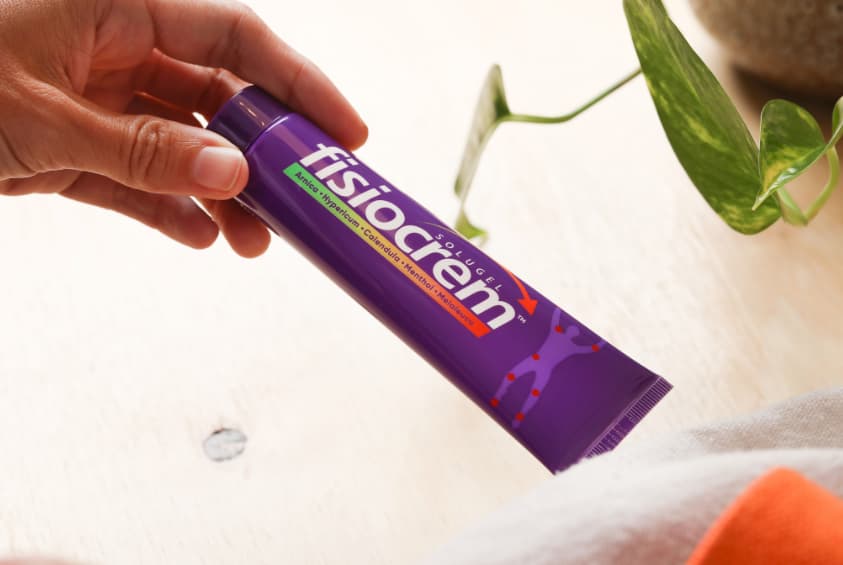
fisiocrem Joint Ease for Neck Pain
fisiocrem Joint Ease is an ideal topical solution for mild neck stiffness and mild joint pain. This topical gel contains ingredients like Boswellia Serrata and Nigella Sativa, which work together to relieve soreness and support joint mobility. By applying fisiocrem Joint Ease to your neck, can ease mild stiffness and discomfort throughout the day.
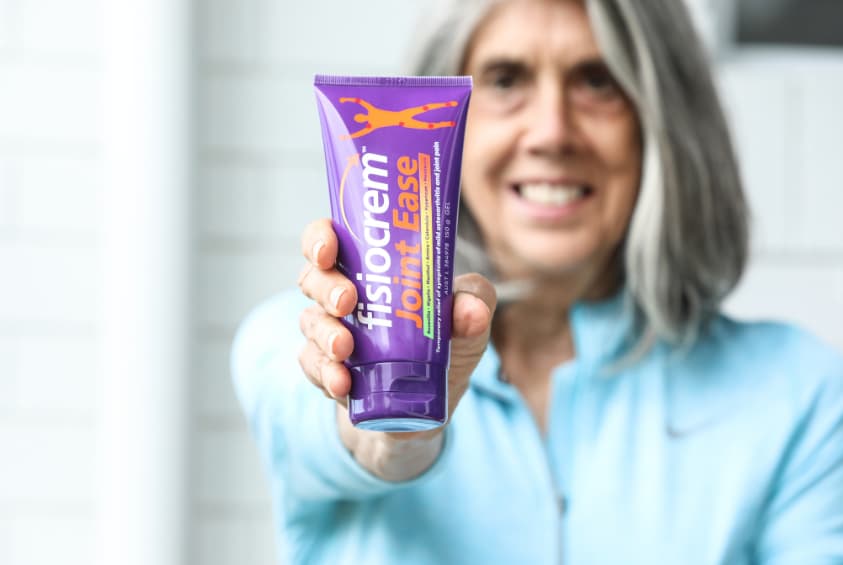
Simple Stretches
Stretching is an effective way to alleviate neck pain. Here are a few simple stretches you can do at your desk or at home:
- Side Neck Tilt: Gently tilt your head toward your shoulder and hold for 15-20 seconds. Repeat on the other side.
- Neck Rotations: Slowly turn your head to the right, hold, then turn it to the left. Repeat 5-10 times.
- Shoulder Rolls: Roll your shoulders forward in a circular motion, then reverse. This helps loosen the muscles connected to the neck.
How to Ease Neck Pain with Self-Massage
Self-massage can be an effective way to release tension in the neck. Using your fingers, gently massage the base of your skull and the sides of your neck in a circular motion. Applying fisiocrem Solugel or fisiocrem Joint Ease during the massage will help relieve pain and stiffness.
Long-Term Remedies
To prevent ongoing neck pain, consider strengthening your neck and shoulder muscles through regular exercise. Activities like yoga or swimming can improve flexibility and posture, reducing the likelihood of developing neck pain. Additionally, maintaining a healthy lifestyle with regular movement is key to long-term relief.
When to Seek Professional Treatment for Neck Pain
You can treat most cases of neck pain with home remedies. However, if the pain continues or gets worse, it is important to see a health professional. If you feel pain with numbness, tingling, or weakness in your arms, it may be a sign of a serious problem. You should seek professional help.
Conclusion
Neck pain can be a daily struggle. Using simple remedies can help provide relief. Stretching, adjusting your workplace ergonomics, and using topical treatments are effective. Try fisiocrem Solugel and fisiocrem Joint Ease for effective relief.
Frequently Asked Questions (FAQs)
The best way to relieve neck pain is through a combination of stretches, ergonomic adjustments, and topical treatments.
You can avoid neck pain by keeping good posture. Adjust your monitor so it is at eye level. Take regular breaks to stretch your neck.
Gentle neck tilts, rotations, and shoulder rolls are great exercises to relieve tension and improve neck flexibility.
Apply fisiocrem two to three times a day, or as needed, for effective relief from neck pain and stiffness.
Select a pillow that supports your neck. It should not be too high or too flat.
Mild arthritis affects millions of people around the world. It causes joint pain, stiffness, and discomfort. These symptoms can make daily activities difficult.
With National Arthritis Week in October, it’s the perfect time to discuss ways to manage and relieve mild arthritis symptoms. In this article, we will look at ways to reduce mild arthritis pain. We will focus on lifestyle changes and topical treatments, such as fisiocrem Joint Ease.
Understanding Mild Arthritis
Mild arthritis is often an early stage of joint-related discomfort where the symptoms are present but not severe. It can affect people of any age, though it’s more common as we get older.
The most common type of mild arthritis is mild osteoarthritis. This condition affects the joints and causes cartilage to break down. As a result, it leads to pain and inflammation.
Symptoms of mild arthritis include joint pain, tenderness, and stiffness. You may also notice a decrease in your range of motion. These symptoms can get worse over time if you do not treat them.
The Importance of Early Treatment for Mild Arthritis
Managing mild arthritis early can prevent the condition from worsening. Early intervention helps maintain joint function and mobility while minimising pain and inflammation. Without proper care, mild arthritis can progress to more severe forms, significantly impacting your quality of life. By addressing it early, you can lead an active and fulfilling life, even with mild arthritis.
Topical Treatments for Mild Arthritis Pain Relief
For mild arthritis relief, topical treatments like creams and gels are popular. They can provide effective pain relief.
fisiocrem Joint Ease is a topical anti-inflammatory cream formulated to address mild arthritis pain. This topical mild arthritis gel helps reduce inflammation, relieve pain, and promote healthy joint function.
How fisiocrem Joint Ease Works
fisiocrem Joint Ease combines menthol & naturally derived active ingredients with scientific innovation to provide effective relief from mild arthritis symptoms. The gel contains key ingredients like Arnica montana, Boswellia serrata, Nigella Sativa, Calendula, Menthol, Melaleuca, and Hypericum, which work together to reduce inflammation, soothe soreness, and support joint flexibility. Its effective formula allows for easy application without a greasy residue, making it a convenient option for daily use.
Menthol & Naturally Derived Active Ingredients in fisiocrem Joint Ease
- Arnica Montana: Known for its anti-inflammatory properties, Arnica Montana helps to reduce joint pain and swelling.
- Boswellia Serrata: This resin extract helps reduce pain and improve joint function.
- Calendula: Helps repair damaged tissue and supports body tissue regeneration.
- Hypericum:(St Johns Wort), Helps to relieve mild swelling & stiffness.
- Melaleuca: (Tea tree oil) Is an anti-inflammatory & enhances the dermal penetration of the active ingredients.
- Nigella Sativa: Helps to relieve mild joint aches, pains, and soreness.
- Menthol: Relieves pain and helps to stimulate blood flow to the skin.
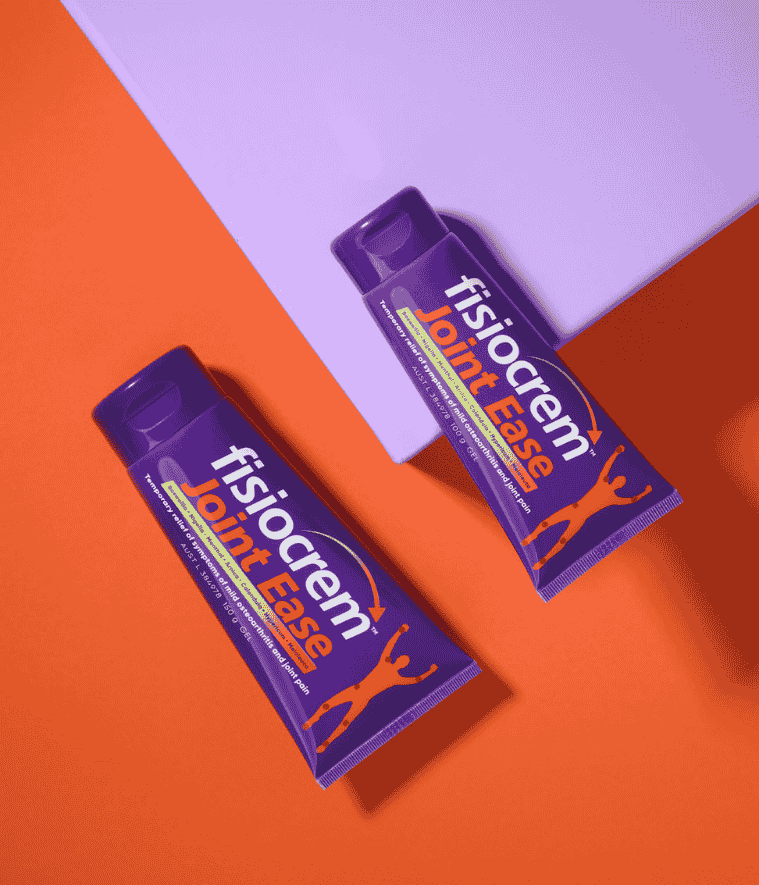
Additional Benefits of Using fisiocrem Joint Ease
In addition to pain relief, fisiocrem Joint Ease helps improve joint mobility and flexibility. This is important for staying active. Using fisiocrem Joint Ease regularly can help ease mild joint stiffness and soreness. This allows you to move more freely during the day.
Incorporating fisiocrem Joint Ease into Your Routine
To get the most out of fisiocrem Joint Ease, it’s essential to apply the product correctly. Use a small amount of the gel on the affected area and gently massage it into the skin until fully absorbed. Since the product provides temporary relief, consistency is key to managing ongoing mild arthritis symptoms.
Lifestyle Changes to Manage Mild Arthritis
In addition to topical remedies, lifestyle changes can play a significant role in managing mild arthritis symptoms. Staying active is crucial for keeping joints flexible and reducing stiffness. Low-impact exercises like swimming, cycling, and walking are ideal for individuals with mild arthritis.
Also, eating a healthy diet with anti-inflammatory foods can help reduce joint inflammation. Foods such as leafy greens, fatty fish, and nuts are ideal sources of anti-inflammatories.
The Role of Exercise in Mild Arthritis Relief
Exercise is a critical component of any management plan. Low-impact activities like yoga, swimming, and tai chi can help strengthen the muscles around your joints. These exercises improve mobility without putting too much strain on the affected areas. Regular physical activity keeps joints flexible and reduces stiffness, making it easier to go about your day.

The Impact of Diet on Mild Arthritis
A balanced diet rich in anti-inflammatory foods can complement the use of fisiocrem Joint Ease and other treatments. Foods like salmon, olive oil, berries, and leafy greens help reduce inflammation. Incorporating more whole foods and fewer processed items can significantly impact your overall joint health.
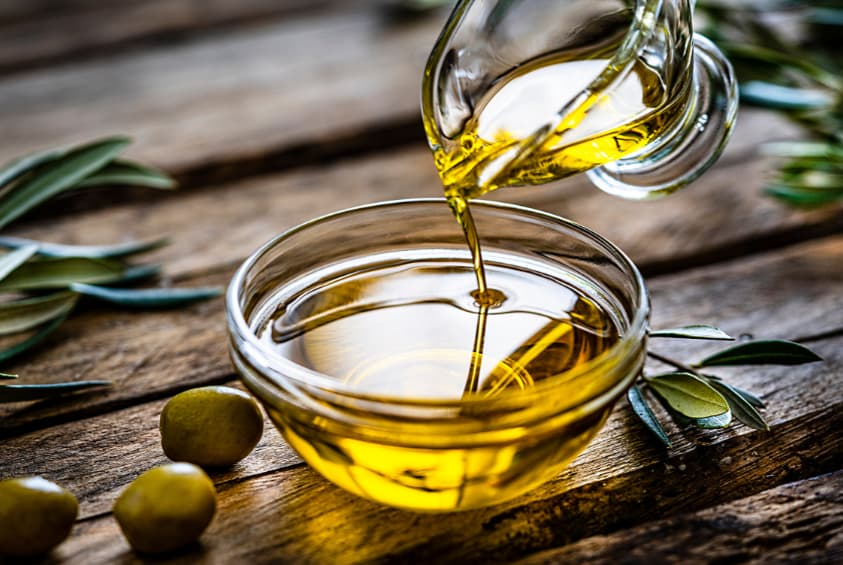
National Arthritis Week: Raising Awareness
National Arthritis Week takes place in October. October is a time to raise awareness about mild arthritis and its impact on daily life. It provides a platform for sharing resources, support networks, and the latest research on managing the condition.
By joining events this week, you can meet others with similar experiences. You can also discover new ways to manage your mild arthritis symptoms. Learn more about National Arthritis Week.
Conclusion
Managing mild arthritis doesn’t have to be overwhelming. Using topical treatments like fisiocrem Joint Ease, making lifestyle changes, and staying active can help reduce pain. These steps can also improve your quality of life. National Arthritis Week is a great time to take action, educate yourself, and find the support you need.
Woke up with sore back? You are not the only one.
Waking up with lower back pain can cast a shadow over your entire day. If you’ve ever asked, “Why does my back hurt when I wake up?” or “What can I do about back pain upon waking?” you’re not alone. Researchers have identified low back pain as a major cause of poor sleep quality (Caggiari., et al. 2021).
Many people experience this discomfort and wonder how to find relief. Fortunately, understanding the causes and exploring effective treatment options that can help you start your day on the right foot.
Understanding the Causes of Lower Back Pain Upon Waking
Several factors might contribute to lower back pain that you notice right after waking up:
1. Sleeping Position:
Your sleep posture plays a crucial role in spinal health. Sleeping on your stomach can cause your lower back to arch un-naturally, leading to pain. Even side or back sleepers can experience discomfort if their posture isn’t correct.
2. Mattress and Pillow Quality:
An old or unfitting mattress can lead to misalignment of your spine, causing discomfort. Similarly, a pillow that doesn’t support your neck adequately can exacerbate back pain.
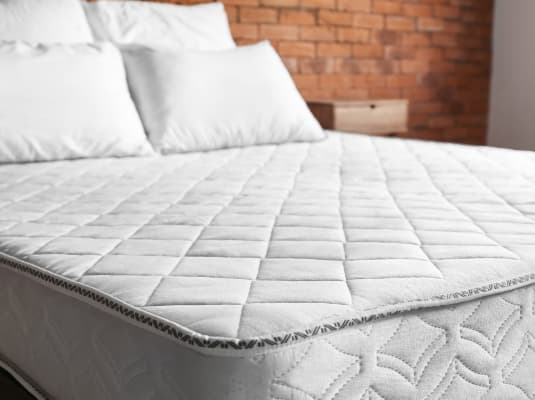
3. Muscle Strain or Previous Injuries:
If you’ve recently strained your back or experienced an injury, you might not feel the pain until you wake up. Activities that involve heavy lifting or sudden movements can strain your back muscles.
4. Poor Sleep Hygiene:
Poor sleep quality can contribute to back pain. If you’re not getting enough restorative sleep, your muscles may not have adequate time to recover. This can lead to stiffness and pain in the morning.
5. Underlying Health Conditions:
Chronic conditions such as mild arthritis can cause ongoing lower back pain that worsens after sleeping.
Effective Strategies for Relieving Lower Back Pain if you woke up with a sore back.
If you wake up with lower back pain or have back pain after waking up, there are ways to help reduce the discomfort.
1. Optimise Your Sleeping Position to avoid waking up with a sore back:
Experiment with different sleeping positions to find one that supports your spine. For many, sleeping on their back with a pillow under the knees can help maintain proper alignment. Side sleepers might benefit from placing a pillow between their knees to reduce strain on the lower back.
2. Evaluate and Adjust Your Mattress and Pillow:
A study found that a medium-firm mattress is best for good sleep and avoiding back pain. It helps with comfort, sleep quality, and back alignment, reducing back pain (Caggiari., et al. 2021).
Assess whether your mattress is providing adequate support. Your pillow should keep your neck aligned with your spine without causing your head to tilt forward or backward.
3. Incorporate Stretching and Strengthening Exercises to avoid waking up with lower back aches:
Gentle stretching and strengthening exercises can help alleviate morning back pain. Incorporate stretches that target the lower back, hips, and legs. Exercises like pelvic tilts, knee-to-chest stretches, and cat-cow stretches can improve flexibility and reduce stiffness.
4. Apply Heat or Cold Therapy:
Heat therapy, such as using a warm compress or heating pad, can help relax tight muscles and ease pain. Cold therapy, such as an ice pack, can reduce inflammation and numb the sore area. Alternate between heat and cold therapies to determine which provides the most effective relief for you.
5. Practice Good Sleep Hygiene:
Maintain a consistent sleep schedule and create a relaxing bedtime routine. Refrain from using screens before bed, and ensure that your bedroom remains cool, dark, and quiet. Good sleep hygiene promotes restorative sleep, which is crucial for muscle recovery and overall health.
6. Stay Active During the Day:
Regular physical activity can strengthen your back muscles and improve your posture. Incorporate low-impact exercises such as walking, swimming, or cycling into your routine. Staying active can also prevent stiffness and reduce the likelihood of waking up with back pain.
7. Use Topical Pain Relief:
Topical treatment options like fisiocrem Solugel offer effective relief for muscle aches and pains. Applying fisiocrem Solugel after waking up with a sore lower back can help reduce inflammation, and ease discomfort. This allows you to start your day with less pain.
Woke up with sore back from mild arthritis pain? Try fisiocrem Joint Ease - Mild Arthritis Relief cream
Woke up with a sore back? When to Seek Professional Help
- Pain that lasts longer than a few weeks
- Pain that changes or worsens over time
- Pain that doesn’t improve with home remedies
Preventive Measures for Long-Term Relief
To avoid waking up with lower back pain in the future, consider implementing these preventive measures:
1. Strengthen Your Core:
A strong core supports your spine and reduces the risk of back pain. Include core-strengthening exercises such as planks and bridges in your fitness routine.
2. Maintain a Healthy Weight:
Excess weight can place additional strain on your back. Aim to maintain a healthy weight through a balanced diet and regular exercise.
3. Use Proper Body Mechanics:
When lifting objects, ensure you bend your knees and maintain a straight back. Avoid twisting your body while lifting.
4. Ensure Ergonomic Workspaces:
If you spend long hours sitting at a desk, ensure your workstation is ergonomically designed to support your back. Use a chair with lumbar support and take regular breaks to stretch and move.
Conclusion
Waking up with lower back pain does not have to dictate the course of your day. By understanding the potential causes and implementing effective treatment options, you can manage and alleviate back pain.
Improving your sleep space and using pain relief creams like fisiocrem can help you wake up feeling better and with less discomfort.
If your back pain persists, don’t hesitate to seek professional advice to address any underlying issues and find long-term relief. Embrace these strategies to wake up feeling more comfortable and ready to take on the day with confidence.
FAQ
Waking up with a sore lower back can be from bad sleep position, a bad mattress or pillow, muscle strain, or health issues.
To alleviate morning back soreness, enhance your sleep quality, evaluate your mattress and pillow, and perform gentle stretches. Topical pain relief products like fisiocrem can also help relieve pain.
Prevent back ache by maintaining good sleep hygiene, staying active, and ensuring your sleep environment is supportive. Strengthening your core and using proper body mechanics can also help prevent future pain.
If your lower back pain worsens or persists despite self-care, consult a healthcare provider to receive appropriate treatment.
Pain in your lower back when you wake up and walk can because of muscle stiffness, poor sleep posture, or misalignment of your spine. Incorporate stretching and strengthening exercises into your routine to improve flexibility and reduce pain.
Yes, topical pain relief products like fisiocrem Solugel can be effective for easing back pain. Apply them after waking up to help reduce discomfort and inflammation.
Address waking up with back ache by adjusting your sleep posture, checking your mattress and pillow, and practicing good sleep hygiene. Incorporate daily stretches and consider using topical pain relief for added comfort.
References
- Caggiari, G., Talesa, G. R., Toro, G., Jannelli, E., Monteleone, G., & Puddu, L. (2021). Journal of Orthopaedics and Traumatology, 22(1).
Celebrating Tradies National Health Month
August is Tradies National Health Month (TNHM). The Australian Physiotherapy Association (APA) started TNHM in 2012. The event focuses on the health and wellness of tradies in Australia.
Australia is currently dealing with a trade shortage and housing crisis, which puts a lot of strain on tradies. At times like these, it’s essential to prioritise their health, as they play a crucial role in our economy. Tradies need to focus on managing pain and preventing injuries to maintain their well-being. By taking care of their health, they can keep working effectively and continue to support our economy.
Understanding Tradies' Health Challenges
Tradies encounter unique health challenges because of the physically demanding nature of their work. Recent surveys highlight the pressing issues:
- Over 90% of tradies experienced work-related injuries or pain last year.
- 76% reported that pain significantly impacts their quality of life.
- 42% described their pain as severe, with some enduring discomfort for months or even years.
- 87% medicate or self-medicate to manage their pain, with 30% resorting to drugs or alcohol.
- 24% are concerned that they will need to retire early because of physical strain.
- Nearly two-thirds who saw a physiotherapist reported significant pain reduction or elimination.
These numbers show that tradies need better ways to manage pain and prevent health issues.
Survey Source: Australian Physiotherapy Association (2024). 2024 Tradies National Health Survey. Understanding how tradies manage pain.
Australian Pain Relief Solutions for Tradies
For tradies battling with pain and discomfort, finding the right solutions is essential. Here’s a look at two standout products that can help make a difference:
Muscle & Back Pain Relief Cream: fisiocrem Solugel
Why fisiocrem Solugel is helpful for tradies:
Tradies frequently face physically demanding tasks that can lead to various forms of muscle pain and back discomfort. From lifting heavy materials to working in awkward positions, these activities put a significant strain on the body. fisiocrem Solugel emerges as a helpful tool for managing such pain and aiding in recovery. This cream helps relieve muscle and back pain from common injuries and strains at work.
Key Benefits of fisiocrem Solugel:
fisiocrem Solugel addresses a range of issues that tradies encounter, including:
- Topical Anti-inflammatory: The gel effectively reduces inflammation, which is crucial for alleviating pain and swelling from injuries. This makes it a valuable option for easing back pain and muscle discomfort.
- Analgesic Effects: It provides effective pain relief by targeting sore and aching muscles. Whether dealing with acute muscle strains or persistent back pain. fisiocrem Solugel helps in managing pain, allowing you to continue working without constant discomfort.
- Enhances Blood Flow: fisiocrem Solugel stimulates blood flow to the skin, promoting faster healing and recovery. This is particularly beneficial for tradies who need to recover quickly from muscle fatigue and strain.
- Muscle Spasms: fisiocrem helps to reduce mild muscle spasms and twitches. Which are common among those who engage in repetitive or strenuous tasks.
- Helps muscles recover faster after exercise and improves performance, allowing tradies to stay productive at work.
How to Use fisiocrem Solugel:
Apply fisiocrem Solugel to the affected area up to three to four times daily. Massage the gel gently into the skin until fully absorbed. fisiocrem Solugel can be applied throughout the day on the job or at home after a long day of work. This application will help to facilitate recovery and manage pain.
The 60g tube of fisiocrem Solugel is convenient to keep in your toolbox or work vehicle. Shop now.
fisiocrem Solugel stands out as a superior choice for tradies dealing with muscle pain, back discomfort, and minor injuries. Its diverse range of benefits make it an invaluable addition to any tradie’s toolkit.
Integrating fisiocrem Solugel into your daily routine, can help you manage your pain and accelerate recovery. This ensures that you keep moving and can be productive in your demanding role.
Discover the Benefits of fisiocrem Joint Ease
Why fisiocrem Joint Ease is helpful for tradies:
For many tradies, joint discomfort and stiffness are frequent challenges, especially given the physically demanding nature of their work. fisiocrem Joint Ease specifically addresses symptoms associated with mild arthritis, mild osteoarthritis, and mild joint pain. It helps support overall joint health, making it a helpful product for tradies.
Key Benefits of fisiocrem Joint Ease:
fisiocrem Joint Ease offers a range of benefits tailored to alleviate joint discomfort and enhance joint function:
- Anti-inflammatory Properties: Reduces joint inflammation and swelling, providing temporary relief from mild joint aches and pains.
- Analgesic Effects: Offers effective pain relief for mild arthritis and temporary joint soreness, allowing for more comfortable movement.
- Supports Tissue Repair: Aids in the repair and regeneration of body tissues around the joints, enhancing overall joint health.
- Improves Joint Mobility: Promotes flexibility and mobility, essential for tradies who rely on their joints for various tasks.
- Alleviates Joint Stiffness: Reduces mild joint stiffness, facilitating easier movement and reducing discomfort during work.
How to Use fisiocrem Joint Ease:
Apply fisiocrem Joint Ease to the affected joint area up to three times a day. Gently massage the cream into the skin until it fully absorbs. Use it during breaks at work or at home to manage joint pain and support joint function throughout the day.
Injury Prevention Tips for Tradies
Preventing injuries is as crucial as managing pain. Here are some practical strategies to help tradies reduce their risk of injury:
Use Proper Technique
Employ correct lifting techniques by bending at the knees, not the waist. This helps avoid back strain and reduces the risk of musculoskeletal injuries.
Take Regular Breaks
Incorporate frequent breaks into your work routine to prevent overuse injuries. Use these breaks to stretch and enhance flexibility, which can help mitigate muscle and joint strain.
Invest in Ergonomic Tools
Use ergonomic tools designed to minimise physical strain. Using well-designed tools can lower the chance of repetitive strain injuries and make work more comfortable.
Perform Warm-Up Exercises
Include warm-up exercises in your daily routine to prepare your muscles and joints for the physical demands of your work. Warm-ups can improve flexibility and reduce the likelihood of injuries.
Stay Hydrated and Eat Well
Proper hydration and a balanced diet are vital for overall health and recovery. Make sure to drink plenty of water and eat a healthy diet to help your body heal and stay energised.
Prioritising Tradies' Health
August is an excellent time to focus on the health of our tradies. We can help essential workers stay healthy and well by managing pain and preventing injuries. Utilising products like fisiocrem Solugel and fisiocrem Joint Ease, alongside practical injury prevention strategies, can help ensure a healthier future for our hardworking tradies.
FAQ
Needing pain relief for back pain?
For relief from back pain, try fisiocrem Solugel. This topical cream helps reduce inflammation and relieve pain through its anti-inflammatory and analgesic properties. Simply apply it to the affected area for effective relief. For ongoing issues, consider consulting a healthcare professional.
How often should tradies take breaks during physically demanding tasks?
Tradies should take breaks every 30 to 60 minutes during physically demanding tasks. Short, frequent breaks help prevent overuse injuries and reduce muscle fatigue. Use these breaks to stretch, move around, and rest, which can help maintain overall comfort and productivity throughout the workday.
Why is hydration important for tradies, and how can it impact their performance?
Proper hydration is crucial for tradies as it helps maintain energy levels, supports muscle function, and prevents fatigue. Dehydration can lead to decreased concentration, muscle cramps, and reduced physical performance.
Running Clubs
If you enjoy running or are interested in trying it, think about joining a running club. You can experience the benefits of running with others in your community. Joining a run club could be the next step in enhancing your running experience and overall well-being.
Why choose a running club?
Joining a running club extends beyond simply logging kilometres. It opens doors to a supportive community, training programs, and various social opportunities. These opportunities can transform your approach to running and improve your fitness and mental health.
1. Community & Social Runs
One of the most significant benefits of joining a running club is the sense of community it fosters. Whether you’re a beginner or a seasoned runner, running clubs welcome all levels of experience. They offer a supportive environment where you can meet new people who share your passion for running. Most run clubs organise weekly running sessions, where members gather for slow runs, speed sessions, Sunday long runs or some social fun runs.
2. Structured Training & Events
Most running clubs provide structured training programs designed by experienced coaches. These programs cater to various fitness levels and goals, from completing your first 5K to tackling a marathon. In addition to regular training sessions, clubs often host events such as races, time trials, and themed runs. These events add excitement to running calendar’s and also provide opportunities to challenge yourself and track your progress.
Running clubs often host special events that enrich social interaction. These include themed runs like Valentine’s Day or runs that support a local businesses such as a coffee shop or brewery. These events provide unique opportunities to connect with others while pursuing your love for running.
3. Support and accountability
Joining a running club helps to bring accountability to your training regimen. Knowing that your friends are waiting for you at Saturday morning runs or track workouts can help you stay motivated. This supportive environment encourages you to push your limits and achieve new milestones.
4. Social media and online community
In today’s digital age, running clubs often extend their community reach through social media platforms. Platforms like Instagram, Facebook, and Strava connect members, allowing them to share their running experiences, achievements, and upcoming events.
fisiocrem Australia has it’s own virtual running club on Strava. The fisiocrem Run Club motivates members to achieve their running goals by hosting challenges, and encouraging social interaction. Join the fisiocrem virtual running community for tips on motivation, recovery, and more.
The Role of Recovery in Running
While the thrill of running is undeniable, effective recovery is crucial for enhancing performance and preventing injuries. fisiocrem Solugel helps to relieve muscle pain and soreness. fisiocrem Solugel helps with post exercise recovery and helps to improve muscle recovery time. Therefore you can maintain that post-run high, ensuring you’re ready for your next challenge.
Physical Recovery with fisiocrem Solugel
Formulated with menthol and naturally derived active ingredients like arnica and calendula, fisiocrem Solugel relief for muscle pain and inflammation. Whether you’re recovering from an intense running session or managing everyday aches, applying fisiocrem Solugel promotes muscle recovery, helping enhance your muscle performance.
fisiocrem Solugel is also ideal for:
- Helps in the healing of minor muscle injuries
- Assists in the management of muscle sprains and strains
- Stimulates blood flow to skin
- Helps relieve mild muscle spasms & twitches
Physical Recovery with fisiocrem Joint Ease
Formulated with Boswellia and Nigella, fisiocrem Joint Ease helps to relieve mild joint pain and inflammation. Running can sometimes cause knee and hip pain, but regular foam rolling and the use of fisiocrem Joint Ease can help relieve mild joint pain.
fisiocrem Joint Ease is ideal for:
- Relieving mild joint aches and pains
- Helping to promote healthy joint function
- Helping support joint mobility & flexibility.
- Relieves mild joint stiffness

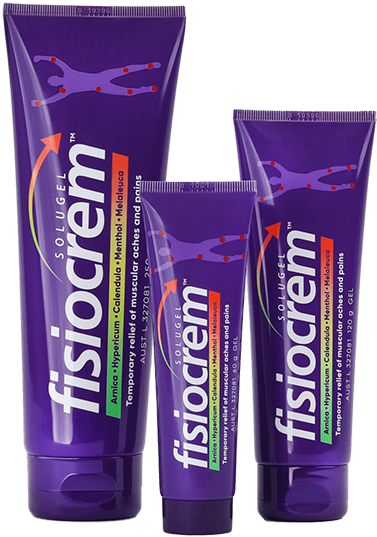

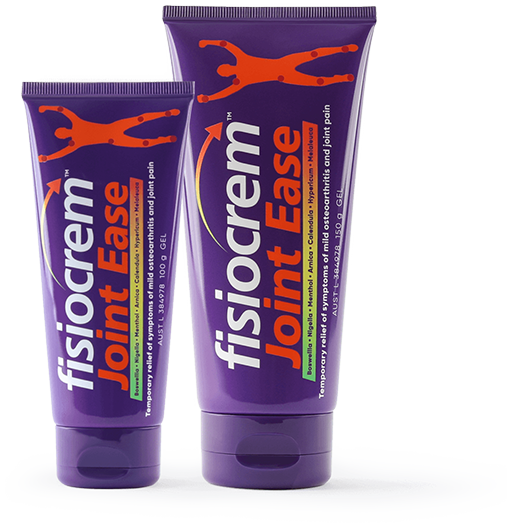
Mental health Benefits
Beyond physical recovery, joining a running club contributes to mental well-being. Regular exercise and social interaction can help enhance overall well-being (Mikkelsen et al., 2017). Running with a club provides a positive outlet for mental health, offering a sense of achievement and belonging.
Conclusion
Joining a running club is more than a fitness choice; it’s a lifestyle enhancement. These run clubs offer a holistic approach to running, from social runs to structured training programs and community engagement.
With the added benefit of effective recovery support from fisiocrem Solugel, you can enhance your running experience. Boost your performance, and fully enjoy the path to improved health.
A running club provides the perfect environment to accomplish your goals. Embrace the benefits of community, structured training, and enhanced recovery with fisiocrem. Join the movement today and discover why running with a club is more than just a hobby—it’s a rewarding lifestyle choice.
Citations
Mikkelsen, K., Stojanovska, L., Polenakovic, M., Bosevski, M., Apostolopoulos, V. (2017). Exercise and mental health. Maturitas 106 48-56
fisiocrem Solugel vs fisiocrem Joint Ease
When it comes to managing pain, from sore muscles, sprains, or mild arthritis, selecting the right topical treatment can greatly improve your comfort and recovery.
fisiocrem Australia offers two effective topical products: fisiocrem Solugel and fisiocrem Joint Ease. In this blog, we will discuss the differences between the two gels. We will also discuss their benefits and answer common questions about relieving muscle and mild joint pain.
fisiocrem Solugel - Muscle pain relief
Crafted to alleviate muscle-related pain and mild sports injuries. fisiocrem Solugel offers relief for a diverse range of individuals. This includes people with back pain from work, muscle pain, and health professionals looking for treatment options for clients.


Contains 5 Active Ingredients:
fisiocrem Solugel expertly combines five powerful active ingredients: Arnica, Hypericum, Calendula, Melaleuca, and Menthol. The ingredients are carefully balanced to help relieve muscle pain, speed up recovery after exercise, and work together simultaneously. This precise formulation also ensures that the product remains non-greasy and absorbs well into the skin.
A clinical study has shown that the specific percentages of these active ingredients deliver effective results. Since its development, we have adhered to this formula, ensuring consistent, high-quality muscle pain relief. Our commitment to maintaining this original formula ensures that fisiocrem Solugel continues to provide the reliable results our customers depend on (Ramon et al, 2022).
Key Benefits:
- Aids in the healing of minor bod tissue injuries
- Relieve symptoms of soft body tissue trauma
- Helps in the healing of minor muscle injuries
- Relieve mild muscle inflammation
- Helps in the management of muscle sprain and strain
- Relieve muscle pain and soreness
- Relieve bruise pain and swelling
- Helps improve muscle recovery time
You can use fisiocrem Solugel alongside blood-thinning medications.
fisiocrem Joint Ease - Mild arthritis pain relief
Formulated to target specific joint concerns including mild joint pain, mild arthritis relief, and mild osteoarthritis. fisiocrem Joint Ease caters to the needs of individuals, particularly the elderly and those facing joint health challenges. fisiocrem Joint Ease is for those seeking a reliable option for improved mobility and joint comfort.


Contains 7 Active Ingredients:
fisiocrem Joint Ease features the same 5 active ingredients as fisiocrem Solugel, plus 2 additional botanical ingredients: Boswellia and Nigella. The original actives found within fisiocrem Solugel are in lower percentages within fisiocrem Joint Ease. This is to avoid diminishing the effectiveness of the new additional botanical ingredients. This balanced formulation also ensures the gel remains non-greasy, absorbs well into the skin, and provides maximum comfort.
Key Benefits:
- Relieve mild joint aches and pains
- Relieve symptoms of mild arthritis and mild osteoarthritis
- Helps promote healthy joint function
- Relieve mild joint inflammation and swelling
- Maintain joint mobility and flexibility
- Relieve mild joint pain and soreness
- Helps improve joint mobility
- Relieve mild joint stiffness
What do both products do?
Both fisiocrem Solugel and fisiocrem Joint Ease are topical anti-inflammatories, suitable for use alongside oral anti-inflammatories or diclofenac tablets.
Before using our products, talk to your doctor if you are taking medications or have health conditions. This will ensure that it is suitable for you. Your doctor can provide guidance on whether our products are suitable for you based on your individual health needs.
Comparing fisiocrem Solugel and fisiocrem Joint Ease
Both products provide pain relief, but their formulations cater to different needs.
fisiocrem Solugel is best suited for muscle pain, such as soreness from physical activity or minor muscle injuries.
fisiocrem Joint Ease relieves mild joint pain and reduces symptoms of mild arthritis, like joint stiffness. This makes it an excellent option for individuals dealing with these joint-related conditions.
Pain Management with fisiocrem Products
Managing pain effectively often requires a combination of treatments. Here are some tips for getting the most out of fisiocrem products:
- Regular Application: Consistently applying the gel to the affected area can help maintain pain relief and support healing.
- Gentle Massage: Gently massaging the gel into the skin can improve absorption and enhance its effects.
- Using fisiocrem along with other treatments like physiotherapy, stretching, and rest can help manage pain effectively.
Choosing the right pain relief cream can significantly impact your comfort and recovery. Whether you’re dealing with muscle pain or mild arthritis, fisiocrem Solugel and fisiocrem Joint Ease are effective treatment options that fit your needs. Understanding the differences and benefits of each product helps you make better decisions and manage your pain more effectively.
You can find both fisiocrem Solugel and fisiocrem Joint Ease, Australian pain relief products, in stores nationwide.
FAQs: Answering Your Questions on Pain Relief
What is the best ointment for muscular and mild joint pain?
fisiocrem Solugel is more suitable for muscular pain.
We recommend fisiocrem Joint Ease for mild joint pain, including mild arthritis and mild osteoarthritis.
What are the best ways to get rid of muscle pain?
Regularly using a muscle pain cream like fisiocrem Solugel can help reduce muscle pain. Resting, staying hydrated, and doing gentle stretches are also beneficial. These actions can all work together to alleviate muscle pain.
What are some ointments that are good for mild joint pain?
fisiocrem Joint Ease specifically targets mild joint pain and provides effective relief for mild arthritis, supporting joint health.
What is the best cream for a sprained ankle?
For a sprained ankle, fisiocrem Solugel can help reduce inflammation and pain, promoting faster recovery.
Anti-inflammatory creams and gels – Do they work?
Yes, anti-inflammatory creams and gels like fisiocrem Solugel and fisiocrem Joint Ease can effectively reduce inflammation and provide temporary pain relief.
What is an anti-inflammatory cream?
An anti-inflammatory cream contains ingredients that help reduce inflammation and swelling in the affected area, providing pain relief and promoting healing.
What is the best soothing gel for muscle pain?
fisiocrem Solugel is an excellent choice for soothing muscle pain because of its blend of active ingredients.
Which is the best pain relieving cream?
fisiocrem Solugel and fisiocrem Joint Ease are both effective topical treatments. The choice depends on whether the pain is muscular or joint related.
How do pain relief creams relieve pain?
Pain relief creams absorb into the skin to bring anti-inflammatory and pain-relieving ingredients to the affected area.
Which pain relieving cream works best for mild arthritis?
fisiocrem Joint Ease is specifically formulated to temporarily relieve mild arthritis. It also supports overall joint health and helps to reduce pain.
How does pain relief gel work?
The skin absorbs pain relief gels, delivering ingredients that reduce inflammation and relieve pain in the specific area.
Citations
- Ramon et al Ortho & Rheum Open Access J 20(1): OROAJ.MS.ID.556028 (2022) This study was funded by fisiocrem.
Seasonal Changes and the effect on mild arthritis
Seasonal changes can indeed have a profound impact on individuals with mild arthritis and mild osteoarthritis (Mori et al. 2019). Different weather conditions, such as temperature, pressure, humidity, sunshine, clouds, wind, and rain, can affect mild arthritis symptoms. Therefore, adapting lifestyle strategies to manage mild arthritis effectively throughout the year is important (Iikuni et al. 2007).
As winter sets in, many patients experience a noticeable uptick in musculoskeletal symptoms. This increase in discomfort because of the cold weather, can trigger muscle spasms and reduce blood circulation, causing joint pain and stiffness (Mori et al. 2019). Research shows that colder temperatures can increase pain levels and stiffness in joints (Aikman, 1997).
Understanding the effect of seasonality on joint pain is integral to developing effective management strategies (Mori et al. 2019).
In this article, we’ll explore the intricate relationship between cold weather and mild arthritis, offering practical tips to help you navigate the winter season with greater comfort. We will also introduce you to fisiocrem Joint Ease. A topical solution that helps with mild osteoarthritis, mild arthritis, mild joint pain, and inflammation.
Understanding Cold Weather & Mild Arthritis:
Cold weather can be particularly harsh on those with mild arthritis, intensifying pain and stiffness associated with the condition. The physiological response to cold temperatures plays a significant role in aggravating symptoms.
When exposed to cold air, our blood vessels constrict, reducing blood flow to the extremities of the body such as the hands and feet. The decrease in temperature can increase sensitivity and pain causing the joints to feel stiffer (Cheung, 2015).
Additionally, fluctuations in barometric pressure, often accompanying cold fronts, can further contribute to joint discomfort. An increase in barometric pressure may cause joint discomfort to become more evident (Wu et al. 2022).
The weather not only affects the conditions of mild osteoarthritis symptoms, but it also affects the ease and willingness of patients to seek medical treatment. Heavy rains, snow and intense winds may make visiting health professionals increasingly difficult for patients. Moreover, extreme cold weather may also affect a person’s willingness to engage in outdoor activities (Wu et al. 2022).
Tips for Managing Mild Arthritis in Winter:
1: Stay Warm:
Ensuring proper insulation against the cold is vital for easing mild winter joint pain. Wearing warm clothes, layering, and using heated blankets can preserve body heat and ease joint pain. Remember to cover areas that are prone to pain to stay comfortable during the colder months. Wearing warmer clothes in cold weather can help manage mild arthritis and mild joint pain during winter (Mori et al. 2019).
2: Maintain Physical Activity:
While it may be tempting to hibernate indoors during winter, staying active is crucial for managing mild arthritis. Low-impact exercises such as walking, swimming, or yoga can help maintain joint flexibility and strengthen surrounding muscles (Kettunen et al. 2004).
Need support in staying active with mild arthritis?
Join a virtual group exercise program designed to boost physical activity levels. From home, engage in weekly live sessions led by knowledgeable instructors, guiding personalised routines. The 12-week program offers support, motivation, and resources to seamlessly integrate safe exercises. These tailored exercises help to alleviate discomfort for a more manageable lifestyle.


3: Topical mild arthritis pain relief creams or gels
Topical anti-inflammatory and analgesic creams can help provide relief for mild arthritis, mild osteoarthritis and mild joint pain. Topical creams and gels tend to have fewer side effects when compared to oral medications (Jurca et al. 2020).
Applying a topical mild arthritis pain relief cream directly to the affected joints can help alleviate discomfort and reduce inflammation, allowing for improved mobility and comfort.
You can find fisiocrem Joint Ease online or at your local pharmacy, and Chemist Warehouse.
fisiocrem Joint Ease contains active ingredients including Boswellia and Nigella. It provides temporary relief for mild arthritis and mild joint pain.
Nigella Sativa oil has anti-inflammatory and analgesic effects helping to relieve mild joint pain and swelling (Mahboubi et al. 2018). Boswellia Serrata can help reduce swelling, and pain and ease stiffness (Etzel, 1996).
fisiocrem Joint Ease can help you to keep you moving and feel more comfortable during the winter season.
Incorporating this topical mild arthritis cream into your daily routine can help you manage your symptoms. Enhance your overall well-being during the colder months with fisiocrem Joint Ease.


As winter arrives, managing mild arthritis and mild joint pain becomes a top priority for many. Understanding how cold weather affects mild arthritis symptoms and using proactive strategies can help reduce discomfort and make winter more comfortable.
Remember, fisiocrem is here to support you on your journey, providing topical relief when you need it most.
FAQs:
Why is mild arthritis worse in winter?
Cold weather can cause blood vessels to constrict, leading to increased joint stiffness and pain.
Does cold weather affect mild arthritis?
Yes, changes in temperature and barometric pressure can exacerbate symptoms of mild arthritis.
What are your top tips for dealing with mild arthritis pain in winter?
Stay warm, stay active, and consider incorporating topical pain relief gels like fisiocrem Joint Ease into your routine.
How to treat mild joint pain in the winter?
Focus on warmth, exercise, and topical remedies to alleviate discomfort and improve mobility.
Is mild arthritis worse in winter or summer?
While both seasons present challenges, many individuals report increased pain and stiffness during the colder months.
Citations
- Aikman, H. (1997). International Journal of Biometeorology, 40(4), 192–199.
- Cheung, S. S. (2015). Responses of the hands and feet to cold exposure. Temperature, 2(1), 105–120.
- Etzel, R. (1996). Phytomedicine, 3(1), 91-94.
- Jurca, T., Józsa, L., Suciu, R., Pallag, A., Marian, E., Bácskay, I., Muresan, M., Liana Stan, R., Cevei, M., Cioara, F., Vicas, L., Fehér, P. (2020). Molecules, 26(1).
- Kettunen, J. A., & Kujala, U. M. (2004). Scandinavian Journal of Medicine & Science in Sports, 14(3), 138–142.
- Iikuni, N., Nakajima, A., Inoue, E., Tanaka, E., Okamoto, H., Hara, M., Tomatsu, T., Kamatani, N., Yamanaka, H. (2007). Volume 46(5) 846-848.
- Mahboubi, M., Mohammad Taghizadeh Kashani, Leila., Mahboubi, M. (2018). Phytomedicine, 46, 69-77.
- Mori, H., Sawada, T., Nishiyama, S., Shimada, K., Tahara, K., Hayashi, H., Kato, E., Tago, M., Matsui, T., Tohma, S. (2019). BMC Musculoskeletal Disorders, 20(1).
- Wu, R.-Y., Pan, R.-H., Wu, C.-Y., Chan, C.-L., & Yeh, H.-J. (2022). BMC Musculoskeletal Disorders, 23(1).
Introduction to Mild Osteoarthritis Pain
Mild Osteoarthritis (OA) is a degenerative joint disease that affects millions of people worldwide (Sinusas, 2012). It occurs when the protective cartilage that cushions the ends of your bones wears down over time. As a result, the bones begin to rub against each other, leading to pain, stiffness, and swelling in the affected joints. Mild osteoarthritis pain can significantly impact daily activities and quality of life, making effective pain management crucial.
The Role of Topical Creams in Pain Management
Topical creams offer a convenient and non-invasive way to manage mild osteoarthritis pain. Topical creams and gels are applied directly to the skin over the affected area, delivering targeted pain relief.
These creams can contain various active ingredients, such as menthol, nigella, or capsaicin (Sinusas, 2012). These actives work by numbing the nerves or reducing inflammation in the joints (Mahboubi, 2017).
Topical creams can alleviate pain and stiffness, enhancing joint range of motion for individuals with mild osteoarthritis (Gemmell et al., 2003)(Kraemer et al., 2004).
Introduction to fisiocrem Joint Ease
fisiocrem Joint Ease is a topical cream/gel specifically formulated to provide temporary relief from symptoms associated with mild osteoarthritis pain. Its contains menthol and naturally derived active ingredients, including nigella, boswellia, arnica, calendula, hypericum, and melaleuca. We carefully selected these ingredients for their anti-inflammatory and analgesic properties.
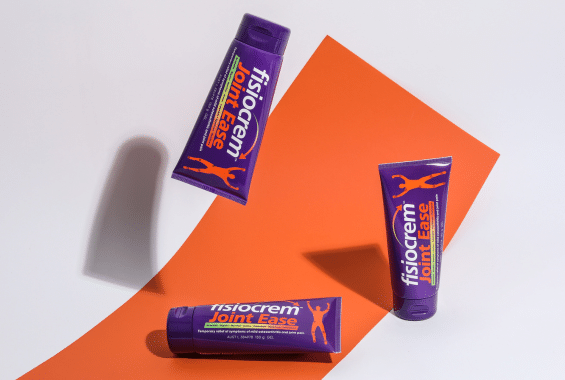
Our hero active Ingredients found within fisiocrem Joint Ease
Nigella Sativa Oil helps to protect cartilage from damage and effectively relieve pain as an anti-inflammatory for individuals with mild osteoarthritis (Kooshki et al., 2016)(Azizi et al., 2019)(Ghamari, et al., 2023).
Boswellia helps alleviate pain and stiffness, improves joint function, and reduces swelling, providing effective relief for individuals suffering from mild osteoarthritis. This active ingredient work together to provide comprehensive relief for those experiencing the discomfort and limitations associated with mild osteoarthritis (Bannuru et al., 2018)(Kimmatkar et al., 2003).
Efficacy of fisiocrem Joint Ease in Relieving Mild Osteoarthritis Pain
fisiocrem Joint Ease offers multiple benefits for individuals suffering from mild osteoarthritis pain. It helps reduce swelling and inflammation in the joints and provides relief from pain. Additionally, fisiocrem Joint Ease supports tissue repair and regeneration, helping to maintain joint health and mobility over time.
How fisiocrem Joint Ease Enhances Joint Function and Mobility
In addition to providing pain relief, fisiocrem Joint Ease helps enhance joint function and mobility. The active ingredients work together to promote healthy joint function and maintaining flexibility. fisiocrem Joint Ease supports overall joint health and reduces the symptoms of stiffness and immobility associated with mild osteoarthritis.
fisiocrem Joint Ease can assist individuals with mild osteoarthritis in staying active and mobile, whether as part of a daily routine or for acute pain flare-ups.
Using fisiocrem Joint Ease for Mild Osteoarthritis Pain Relief
fisiocrem Joint Ease is a simple and effective mild osteoarthritis treatment, designed to be applied directly to the affected area as needed. Easy to use, it involves massaging a small amount of cream into the skin over the painful joint until fully absorbed. For optimal results in managing mild osteoarthritis pain, we recommend integrating fisiocrem Joint Ease into your regular treatment routine.
If you have sensitive skin, test this product on a small area of skin before applying it to a larger area.
FAQs (Frequently Asked Questions)
1. How long does it take to experience relief with fisiocrem Joint Ease?
The time it takes to feel relief from fisiocrem Joint Ease varies for each person. Many users report feeling the effects shortly after applying it. To achieve optimal results, we recommend using the cream regularly as part of your pain management routine.
2. Can fisiocrem Joint Ease be used alongside other medications?
fisiocrem Joint Ease can be used alongside some medications including warfarin and oral anti-inflammatories. However, it is advisable to consult with a healthcare professional to ensure compatibility with any existing treatments or medications.
3. Are there any side effects associated with fisiocrem Joint Ease?
While fisiocrem Joint Ease is well-tolerated by most individuals, some people may experience mild skin irritation or allergic reactions. If you experience any adverse effects, discontinue use immediately and consult with a healthcare professional.
For added safety, it is advisable to conduct a patch test as a safety measure. Just apply a small amount of the product to a small area of skin before using it on a larger area. This method helps to ensure that the product is well-tolerated by the individual prior to broader application.
4. Where can I purchase fisiocrem Joint Ease?
fisiocrem Joint Ease mild osteoarthritis pain relief cream is available for purchase online and at select retailers.
Citations
- Azizi, F., Ghorat, F., Rakhshani, M., Rad, M. (2019). Journal of Herbal Medicine, 16.
- Bannuru, R., Osani, M., Al-Eid, F., Wang, C. (2018). 48(3), 416-429. Retrieved from https://www.sciencedirect.com/science/article/abs/pii/S0049017218300027
- Gemmell, H., Jacobson, B., Hayes, B. (2003). Journal of Manipulative and Physiological Therapeutics, 26(5) 322
- Ghamari, M., Salari, M., & Khodashahi, M. (2023). Traditional and Integrative Medicine, 8(3).
- Kimmatkar, N., Thawani, V., Hingorani, L., Khiyani, R. (2003). Phytomedicine, 10(1), 3-7.
- Kooshki, A., Forouzan, R., Rakhshani, M., & Mohammadi, M. (2016). A Crossover Clinical Trial, 8(11) 3193-3197
- Kraemer, W., Ratamess, N., Anderson, J., Maresh, C., Tiberio, D., Joyce, M., Messinger, B., French, D., Rubin, M., Gomez, A., Volek, J., Hesslink, R. (2004). Retrieved from https://www.jrheum.org/content/31/4/767.short
- Mahboubi, M. (2017). Complementary Therapies in Clinical Practice. 26, 1-4.
- Sinusas, K. (2012). American family Physician, 85(1) 49-56
- Yu, G., Xiang, W., Zhang, T., Zeng, L., Yang, K., & Li, J. (2020). BMC Complementary Medicine and Therapies, 20(1).
Wholesale & Practitioners
fisiocrem Australia is devoted to helping you manage your pain, and we have been since 2009. We develop high-quality topical pain relief products that stop pain from interfering with your regular activity.
Are you visiting from New Zealand?
Visit fisiocrem New Zealand here

